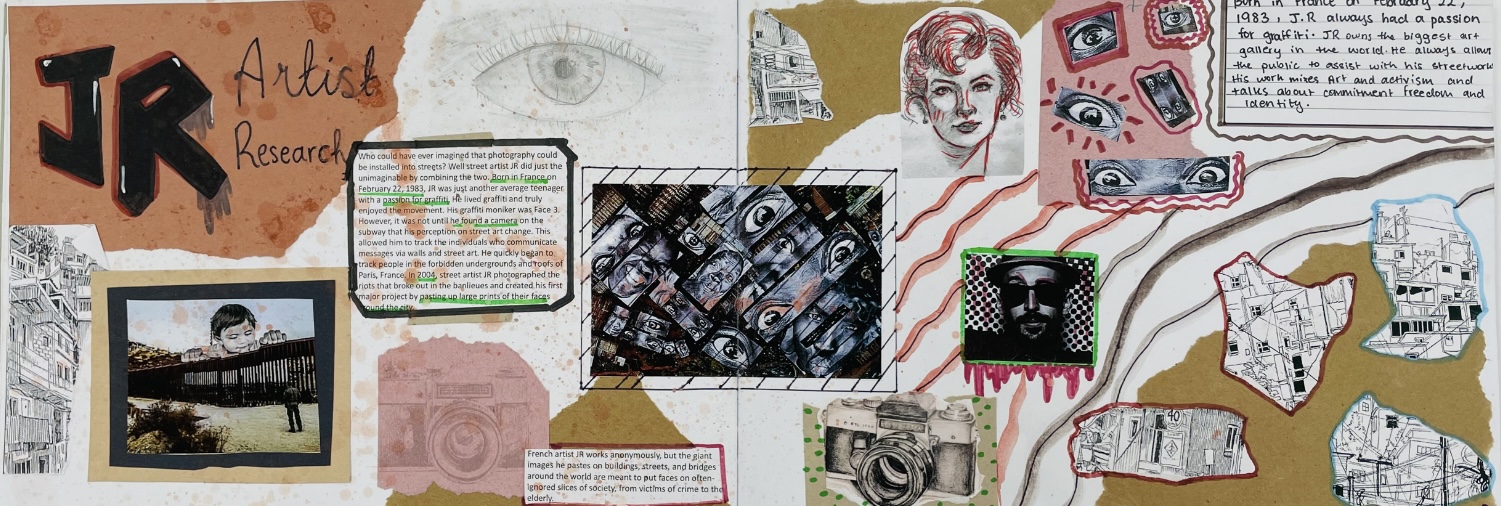

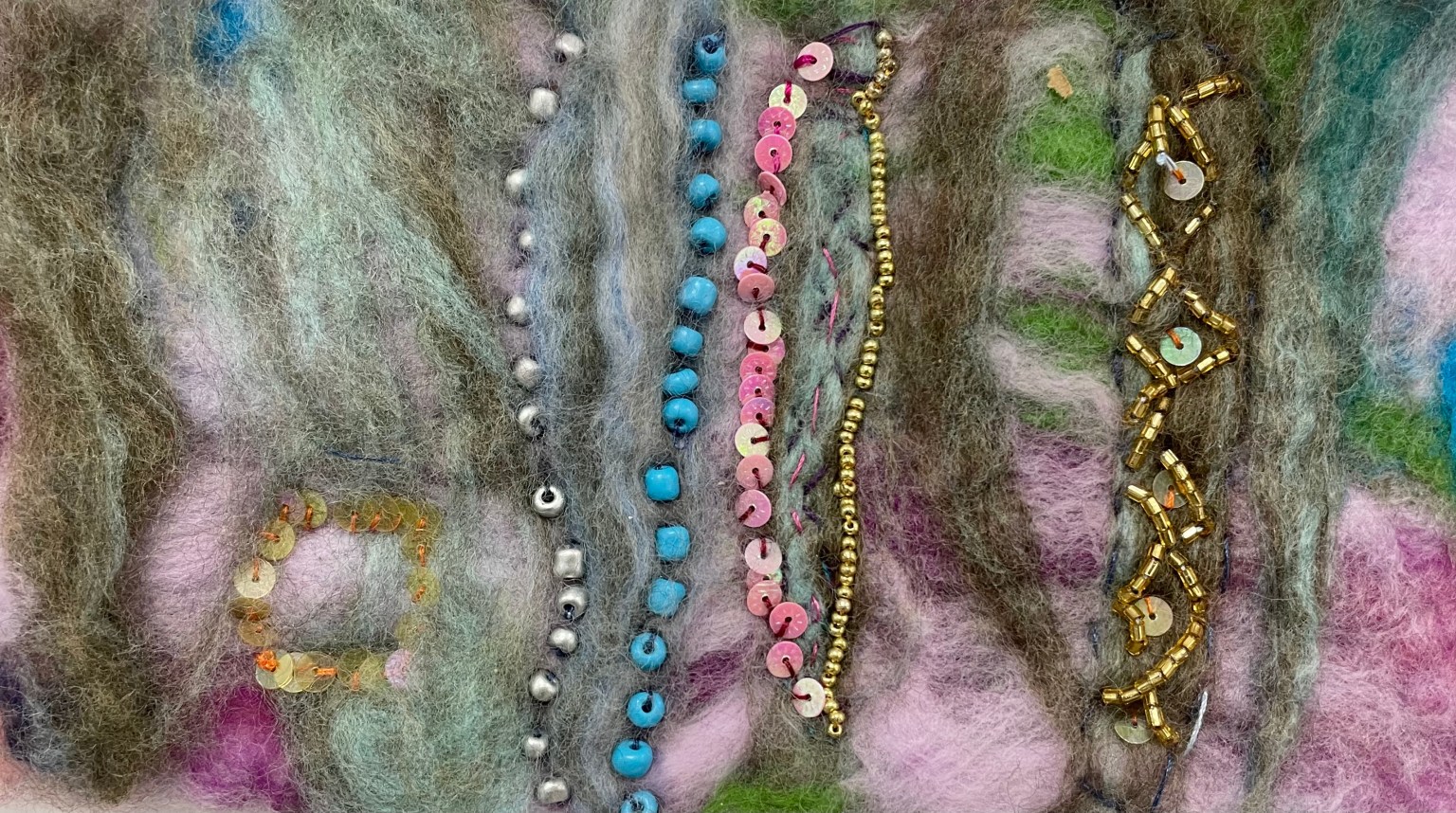
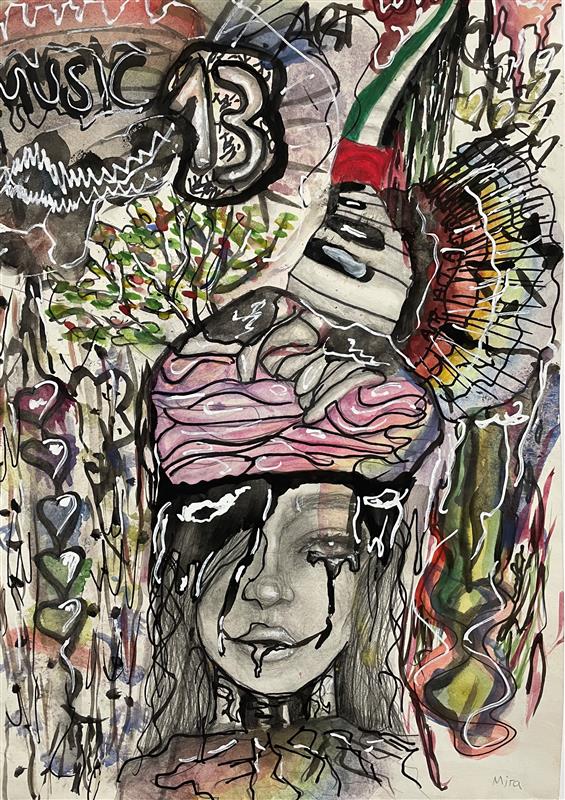
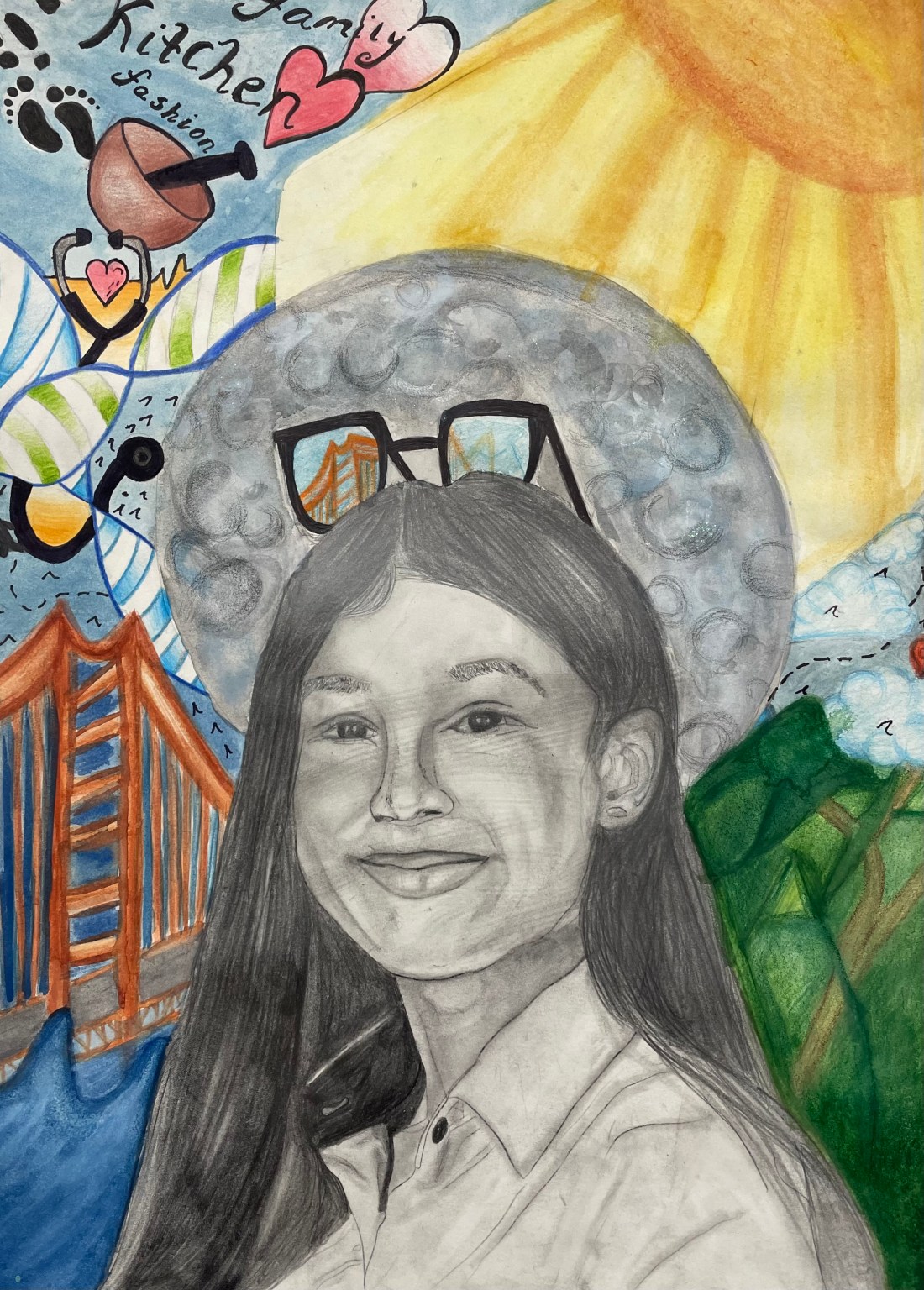
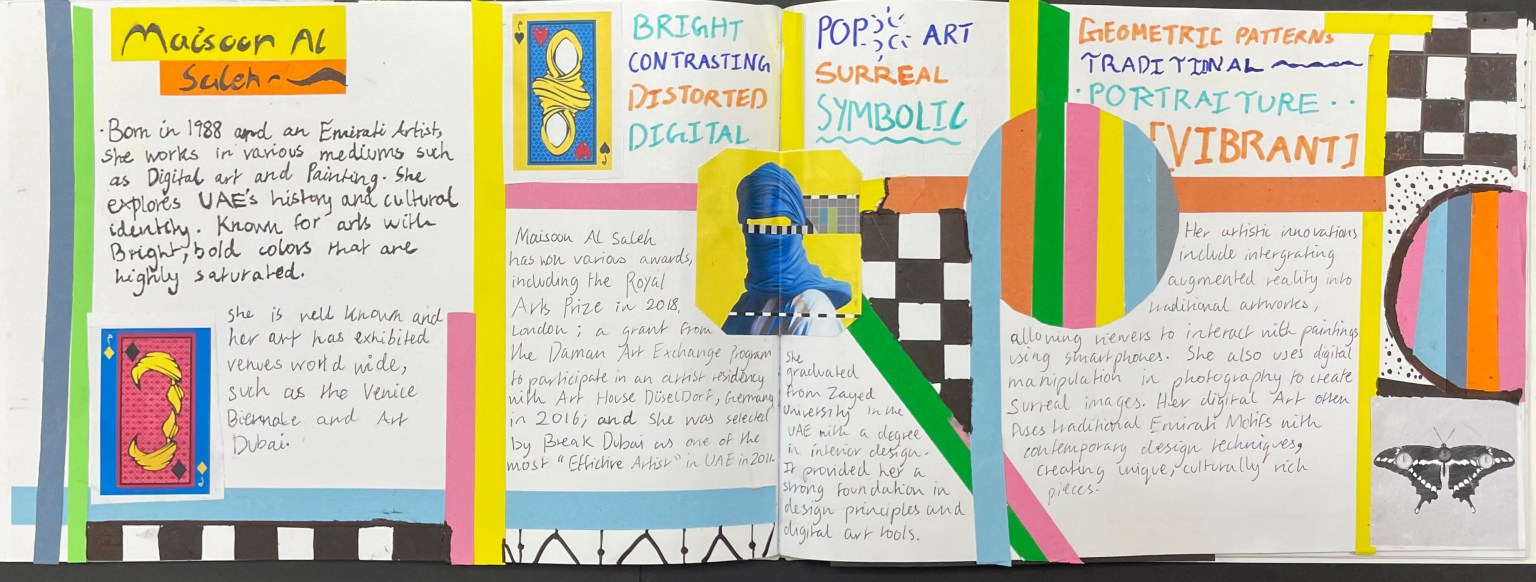
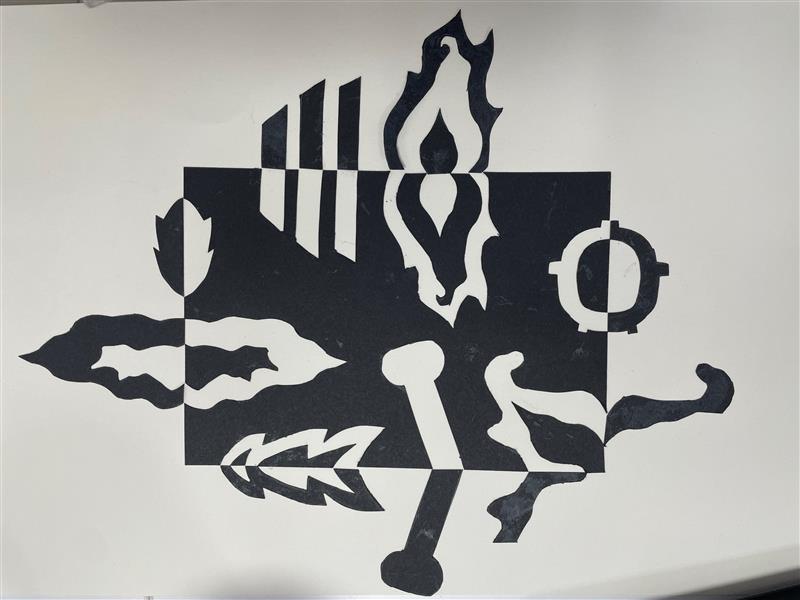
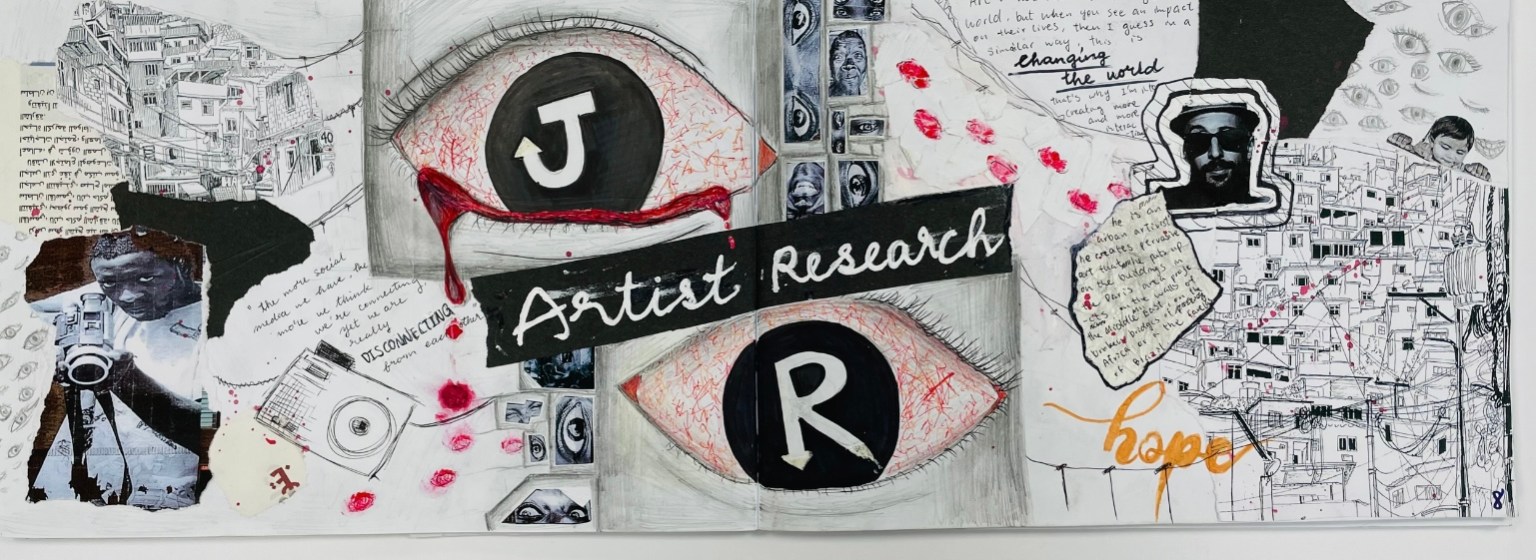
At Deira International School, our Visual Arts department is a thriving hub of creativity, offering KS3 students an engaging and high-quality experience in both 2D and 3D art mediums. We are passionate about providing students with fun and educational opportunities that inspire a love for the arts. Our classes at KS3 encourages experimentation with a diverse range of materials, including graphite, watercolours, oil pastels, acrylics, textiles, and digital photography. By blending traditional techniques with modern tools, we aim to nurture well-rounded artists who are confident in expressing their unique ideas.
Our curriculum introduces students to an exciting variety of artists from different cultural contexts and time periods, including Bridgit Riley, Hannah Höch, Mark Powell, Maisoon Al Saleh, Jean-Michel Basquiat, Ian Murphy and many more, as well as notable Emirati artists.
Students also benefit from enriching experiences outside the classroom, such as visits to local galleries and exhibitions and engaging workshops with visiting artists. We actively encourage participation in competitions and collaborative projects, fostering a sense of community and pride as students create artworks displayed throughout the school. By immersing students in such a vibrant environment, we aim to spark creativity, broaden perspectives, and lay the foundation for lifelong artistic exploration.
Curriculum Intention
Students will learn about the formal elements of art including; line, color, form and shape, value, texture, space, and movement
Students are taught how to do hold a pencil, produce a range of tones with a pencil. Students will be able to employ colour theory in their work. Students will understand the role of the artist in society and how they can use their own creativity to make a difference to our world.
Why are students being taught the above? Students will develop confidence in their own ability as artists and understand that art is a subject for everybody.
Curriculum Implementation
Teaching Methods
Classroom Resources:
Pencils
Mod rock
Plaster
Cardboard modelling
Paints
Digital devices
Collage materials
Teacher created video resources
Each student will have their own sketchbook.
Assessment
Students will take part in an observational drawing assessment which links to the theme of the topic. We will also complete a holistic assessment of sketchbook work to date which will cover all of the assessment objectives of the Pearson IGCSE specification.
Wider Curriculum (Links to STEAM, reading across the curriculum, CCAs and trips):
Students will have access to the Young Artist and Young Designer CCAs
Students will be given tasks to visit museums and cultural institutions.
Students will be creating projects linked to real life institutions.
Curriculum Intention
Students will learn about portraiture and identity. Students will explore how to make portraits and the many forms that this genre of art takes. Students will delve into how portraiture can link to social and moral themes. Students will also express their own identities through their work with a focus on the diversity of our student community.
Students will then look at ceramics and 3D work to enhance their understanding of contemporary art.
The final unit of year 8, Man vs Machine will give students the chance to consolidate knowledge from the year to produce ambitious outcomes for an exhibition.
Why are students being taught the above? Students will gain a deeper understanding of the role of the artist and designer. Students will have the chance to explore and discuss identity through the creation of ambitous artworks.
Curriculum Implementation
Teaching Methods
Classroom Resources
Digital devices
Paints
Collage materials
Teacher created video resources
Each student will have their own sketchbook.
Assessment
Students will take part in an observational drawing assessment which links to the theme of the topic. We will also complete a holistic assessment of sketchbook work to date which will cover all of the assessment objectives of the Pearson IGCSE specification.
Wider Curriculum (Links to STEAM, reading across the curriculum, CCAs and trips):
Students will have access to the Young Artist and Young Designer CCAs
Students will be given tasks to visit museums and cultural institutions.
Students will be creating projects linked to real life institutions.
Curriculum Intention
Students will learn about street art and the role of the artist in the urban environment. Students will interrogate what it means to be an artist and the importance of this role. Students will develop this into architectural works which will culminate in an exhibition.
At the end of year 9 students will embark on a GCSE foundation project where they will work through the AOs from the GCSE specification and be encouraged to produce more personal independent work.
Students are taught how to work across a range of media and onto a range of surfaces. Students are taught how to convey meaning in their artwork.
Why are students being taught the above? Students will understand the career options available in Art and design. Students will become familiar with the assessment objectives in IGCSE Art and will be able to navigate these to produce highly personal artworks.
Curriculum Implementation
Teaching Methods
Classroom Resources
Paints
Collage materials
Teacher created video resources
Each student will have their own sketchbook.
Digital devices
Assessment
Students will take part in an observational drawing assessment which links to the theme of the topic. We will also complete a holistic assessment of sketchbook work to date which will cover all of the assessment objectives of the Pearson IGCSE specification.
Wider Curriculum (Links to STEAM, reading across the curriculum, CCAs and trips):
Students will have access to the Young Artist and Young Designer CCAs
Students will be given tasks to visit museums and cultural institutions.
Students will be creating projects linked to real life institutions.
Impact – What success will look like? What students will be able to at the end of each year. How will you know what has been taught has been learned (Assessments)? |
By the end of Year 7 students will be able to demonstrate an understanding of how to manipulate a range of materials and will be able to use these to produce work that acknowledges the formal elements of Art. Students will demonstrate evolving skills as the year progresses. All students should feel confident and able to access the Art curriculum. |
By the end of Year 8 students will have shown an understanding of the role of the artist in society. Students will be able to make portraits which are in proportion and explore identity and culture. Students will be able to identify a range of artists from global cultures, students will be able to critically analyze the work of a rage of artists and be influences by them. |
By the end of Year 9 students will understand the 4 assessment objectives in IGCSE and will be able to produce a body of work that navigates these. Students will be confident in working with a range of media and skillfully expressing ideas and intentions. Students will understand the range of careers and opportunities afforded to them by studying the Visual Arts. |
What evidence will there be to show students have been successful and teaching has been effective?
What would students say about your subject of if asked?
Are students progressing? How do you know this?
What has the wider impact of your curriculum be?
When looking at impact this will be more detailed to what you may have stated in the intention.